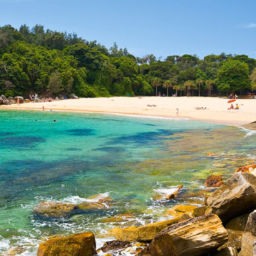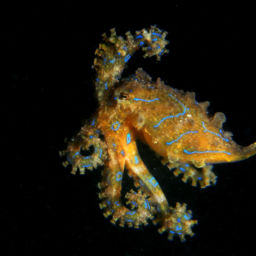By Dr. Klaus M. Stiefel
A bit south of famed Botany Bay, where Captain James Cook landed in 1770, is the Hacking River, a spot favored by Sydney divers for an excellent dive site called Ship Rock. Named after an unusual ship-shaped rock right at the entry point, this site offers a rich, invertebrate-covered wall and dense, diverse fish life.
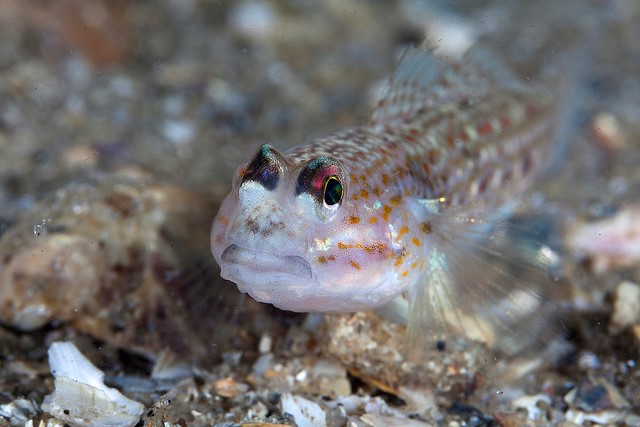
After a brief walk down a set of stairs (the walk feels considerably less brief when going the other direction), you’ll first swim out over a sandy patch and then drop down along a wall, which transitions into sand again at about 52 feet (16 meters). The sponges and tunicates on the wall provide ample hiding spaces for nudibranchs, crab and shrimp. Massive scorpionfish also rest on these encrusting invertebrates. Along the wall, swim orange-banded coralfish (a type of large butterflyfish), damselfish, small wrasses and several species of leatherjacket, as filefish are commonly known here. These fish make interesting subjects on a dive: active, intelligent animals, they display complex social interactions. Fanbelly leatherjackets display their sizes to each other in territorial disputes by extending a skin flap below their mouth. The horseshoe leatherjackets are gaudily colored, and display strong sexual dimorphism: the patterns on the male and female fish look very different.
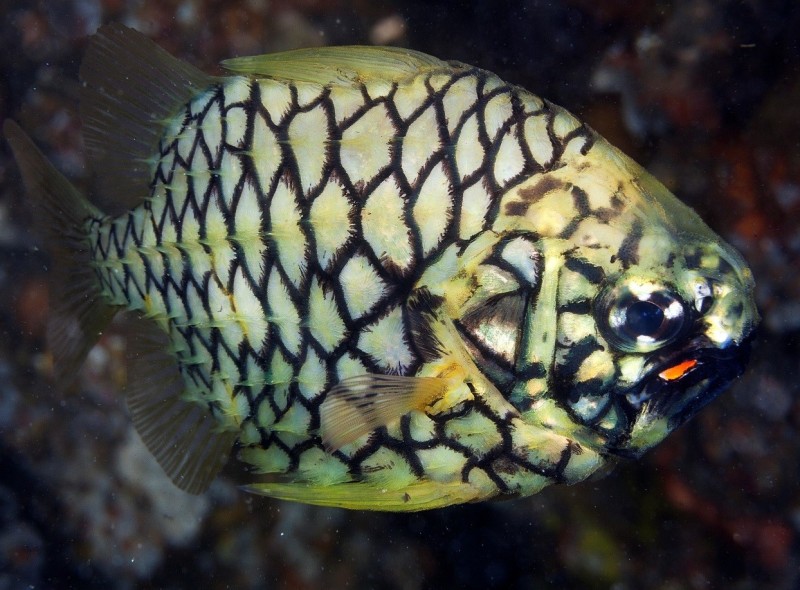
In the sand below the wall, Hoese’s sandgobies dart back and forth. And the crevices just below the wall promise another goody: pineapple fish, which keep a pouch full of bioluminescent bacteria under their jaws to be used as flashlights at night, live in the area. Ground-dwelling wobbegong sharks and the occasional frogfish round out the diving experience at Ship Rock.
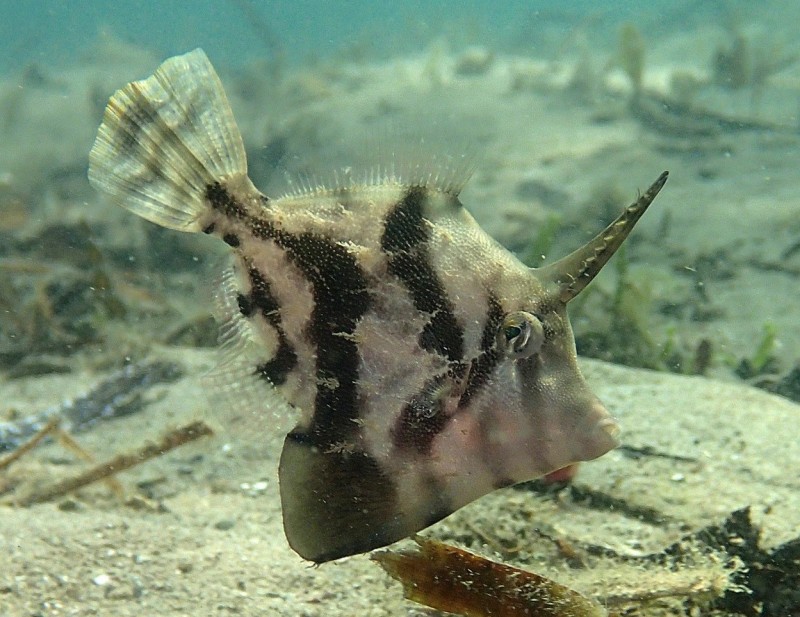
Why is the marine life here so abundant and healthy? Almost certainly because the site has been a marine sanctuary since 1982. Angling and spearfishing are illegal in the area, although unfortunately this might not stay that way. As a consequence, there are more species of fish and more individual fish, which are larger than those at non-protected sites in the Sydney area. I don’t have hard data to back this up, but the fish also seem more curious and less fearful than outside of sanctuary zones. As readers of Scubadiverlife.com you’re most likely aware of the issues facing the ocean, and very much in favor of protecting marine life; I might be preaching to the choir here. You might already know that marine-protected areas and sanctuaries have multiple environmental benefits: one of the most significant is the ability of fish populations to recuperate within protected areas, which can also lead to an increase in fish numbers in adjacent areas. But it’s one thing to understand the facts and statistics that detail the benefits of marine sanctuaries, and another to see the benefits with your own eyes. If you want to see a dive site where the healthy marine environment demonstrates the effectiveness of marine sanctuaries, then dive Ship Rock.


